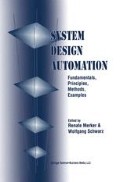Abstract
Intelligent systems, e.g., for vision and cognition tasks, enjoy increasing industrial acceptance and application. Application domains range from optical character and handwriting recognition to biometric systems. The joint exploitation of advanced microelectronics, sensor technology, and intelligent systems provides a tremendous economic potential. Tight application constraints such as, e.g., size, speed, performance, and power consumption give increasing attraction to dedicated integrated system implementations exploiting bio-inspiration and opportunistic design techniques in analog or mixed-signal circuits and systems. However, to achieve a viable design at reasonable cost and time-to-market, an appropriate design methodology is required. This paper presents quantitative measures for system-oriented imperfection compensation, optimization, and validation of dedicated application-specific intelligent systems. These measures serve for the fast and consistent behavioral modeling of an aspired intelligent system, and support the rapid and consistent transformation into a physical design. Further, they provide the basis for ensuing design automation of the process, and contribute to the ongoing vivid activities of method and tool development for system simulation and evaluation.
Access this chapter
Tax calculation will be finalised at checkout
Purchases are for personal use only
Preview
Unable to display preview. Download preview PDF.
Literature
Vittoz, E.: Present and Future Industrial Application of Bio–Inspired VLSI–Systems. Proc. of 7th Int. Conf. On Microelectronics for Neural, Fuzzy, and Bio–Inspired Systems, Granada, ISBN 0–7695–0043–9, IEEE CS, pp. 2 – 11, 1999.
Kage, H., Funatsu, E., Tanaka, K., Kyuma, K..: Artificial Retina Chips for 3-D Human Motion Reconstruction. Proc. of the IIZUKA’98 Int. Conf. On Methodologies for the Conception, Design, and Application of Soft-Computing. Iizuka, Japan, World Scientific, pp. 76, 1998.
König, A..: Survey and Current Status of Neural Network Hardware. Invited. Proc. of 5th Int. Conf. On Artificial Neural ICANN’95, Paris, France, pp. 391–410, 1995.
König, A, Skribanowitz, J., Schreiter, J., Getzlaff, S., Eberhardt, M., Wenzel, R.: Ein System zur schnellen Modellierung von Bildverarbeitungs-und Erkennungssystemen. Tagungsband Dresdner Arbeitstagung Schaltungs-und Systementwurf DASS’98, FIG IISEAS, 1998.
König, A, Eberhardt, M., Wenzel, R.: QuickCog Self-Learning Recognition System — Exploiting machine learning techniques for transparent and fast industrial recognition system design. Image Processing Europe, PennWell, pp. 10 — 19, Sept/Oct. 1999.
Intel Corp.: Intel 80170NX Electrically Trainable Analog Neural Network. Product Description and Data Sheet, Intel Corp. Order No. 290408–002, 38 pp, June 1991.
Einwich, K., Haase, J., Prescher, R., Schwarz, P.: Makromodellierung fur Mixed-SignalSchaltungen. mikroelektronik me Bd.9 H.4, VDE-Verlag Berlin, pp. 20–25, 1995.
König, A., Günther, A., Kröhnert, A., Grohmann, T., Döge, J., Eberhardt, M.: Holistic Modelling and Parsimonious Design of Low-Power Integrated Vision and Cognition Systems. Proc. of the IIZUKA’00 6th Int. Conf. On Methodologies for the Conception, Design, and Application of Soft-Computing. Iizuka, Japan, World Scientific, pp., 2000.
König, A., Günther, A., Döge, J., Eberhardt, M.: A Cell Library of Scalable Neural Network Classifier for Rapid Low-Power Vision and Cognition Systems Design. Proc. of 4`h Int. Conf. On Knowledge-Based Intelligent Engineering Systems and Allied Technologies KES2000. Brighton, UK, pp. 275–282, 2000.
König, A.: Interactive Visualization and Analysis of Hierarchical Neural Projections for Data Mining. IEEE TNN, Vol.11, No.3, Special Issue on Neural Networks for Data Mining and Knowledge Discovery, pp. 615–624, 2000.
Author information
Authors and Affiliations
Editor information
Editors and Affiliations
Rights and permissions
Copyright information
© 2001 Springer Science+Business Media Dordrecht
About this chapter
Cite this chapter
König, A. et al. (2001). Quantitative Measures for Systematic Optimization, Validation, and Imperfection Compensation in the Holistic Modeling and Parsimonious Design of Application-Specific Vision and Cognition Systems. In: Merker, R., Schwarz, W. (eds) System Design Automation. Springer, Boston, MA. https://doi.org/10.1007/978-1-4757-6666-0_21
Download citation
DOI: https://doi.org/10.1007/978-1-4757-6666-0_21
Publisher Name: Springer, Boston, MA
Print ISBN: 978-1-4419-4886-1
Online ISBN: 978-1-4757-6666-0
eBook Packages: Springer Book Archive

